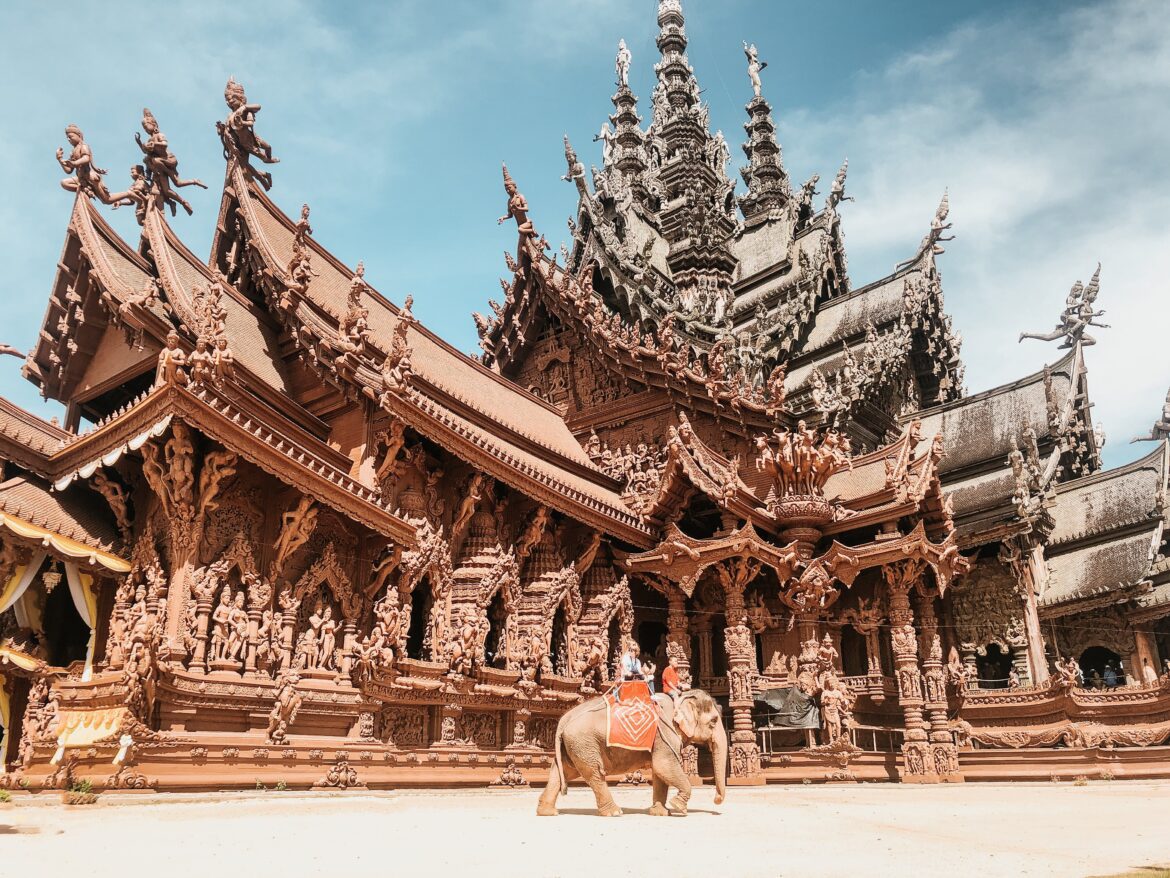Thailand, also known as the “Land of Smiles,” captivates travelers with its rich cultural legacy and breathtaking architectural treasures. Thailand’s art and architecture reflect the country’s deep-rooted traditions, spiritual beliefs, and cultural influences from neighboring countries. The article will take you on a journey across Thailand’s lively art scene and architectural marvels, from grand temples to detailed sculptures.
Traditional Thai Art:
Thai art includes a variety of mediums such as painting, sculpture, and decorative crafts. Traditional Thai art frequently shows religious and mythical themes that are influenced by Buddhism and Hinduism. Thai art’s rich intricacies and brilliant colors reflect the country’s deep spiritual connection.
Mural painting is a popular type of traditional Thai art that can be found in temples and palaces. These ornate paintings frequently depict scenes from religious scriptures and royal histories. The beautiful murals representing the Ramayana at Bangkok’s Wat Phra Kaew are a prominent example of this art type.
Another distinguishing feature of Thai art is the skilled craftsmanship evident in sculptures and woodcarvings. Thai sculptures, which range from tranquil Buddha statues to mythological creatures, are distinguished by their exquisite detailing and beautiful forms. Sukhothai is famous for its Buddha sculptures, which showcase the elegance and spiritual depth of Thai art.
Thai Architecture:
Thai architecture is a synthesis of numerous influences, including Indian, Khmer, and Chinese forms, merged with indigenous Thai characteristics. Thai temples, or “wats,” are the most recognizable forms of Thai architecture. These structures function as religious and cultural centers.
The architectural wonder Wat Arun in Bangkok is a symbol of Thailand’s rich past. Its center prang, or tower, is covered with porcelain tiles and glistens in the sunlight, making for a stunning picture. The temple’s design features a distinctive blend of Khmer and Thai architectural elements.
Another well-known example is Chiang Mai’s Wat Phra That Doi Suthep. This temple, perched on a mountain, features a magnificent golden chedi (stupa) and elaborate decorations. The hilltop elevation of the temple provides panoramic views of the surrounding terrain, creating a peaceful environment for worshippers and visitors alike.
Traditional Thai dwellings, or “baan song,” highlight the country’s architectural heritage. These stilted wooden buildings have exquisite carvings and elegant gables. The architecture is intended to blend in with nature while also adapting to Thailand’s tropical environment.
Contemporary Thai Art and Architecture:
Thailand’s artistic environment is more diverse than its traditional forms. The country has a vibrant contemporary art culture, with galleries and art spaces displaying the work of local and international artists. The dynamic art districts of Bangkok, including as Charoenkrung and Thonglor, are centers of creativity and innovation.
Thai architecture today embraces modern elements while adhering to traditional architectural principles. The Bangkok Art and Culture Centre (BACC), a modernist structure that serves as a platform for artists and cultural events, and the award-winning Terminal 21 retail mall in Bangkok, recognized for its innovative architectural themes inspired by numerous foreign cities, are two iconic examples.
Conclusion:
Thailand’s art and architecture are testaments to the country’s rich cultural legacy and creative energy. Visitors can immerse themselves in Thailand’s vibrant artistic traditions by seeing ancient temples covered with beautiful paintings or appreciating contemporary art in bustling cities. Thai art and architecture continue to attract and inspire visitors from all over the world with its complex details, brilliant colors, and spiritual symbolism, making Thailand a must-see trip for art fans and cultural explorers alike.

